When buying a new car, it generally starts to lose value right away. An average car experiences a depreciation of 23.5% within the first year and around 60% over the course of its first five years.
Nonetheless, certain vehicles defy this trend and actually appreciate as time passes. Below are some cars that can financially benefit owners by increasing in value as the years go by.
Cars That Appreciate With Age
Most cars lose value the moment they roll off the lot — but not all. Some vehicles defy depreciation and become more valuable over time, transforming from everyday machines into coveted collector’s items.
Whether it’s due to limited production, iconic design, performance pedigree, or cultural impact, these cars are investments that you can actually drive. In this article, we break down the standout models that don’t just hold their value — they gain it, year after year.
1. Ford Focus RS
Previously, a wide range of aftermarket parts was available for the Ford Focus RS, and the customization options attracted many buyers.
But Ford has since ceased production of the Focus. Now, the vehicle can only be found on the used car market. This scarcity could be one of the reasons why many anticipate the car’s value will rise in the coming years.
In many ways, the latest Focus RS shares more DNA with the iconic, winged Escort RS Cosworth than with the previous generation Focus RS — not least because it also features four-wheel drive. At its core is a 2.3-litre four-cylinder petrol engine, the same unit found in the new Ford Mustang.
With an output of 350hp, it proudly holds the title of the fastest Focus ever produced. For those seeking even more punch, renowned tuner Mountune offers a power upgrade to 375hp for £1,050.
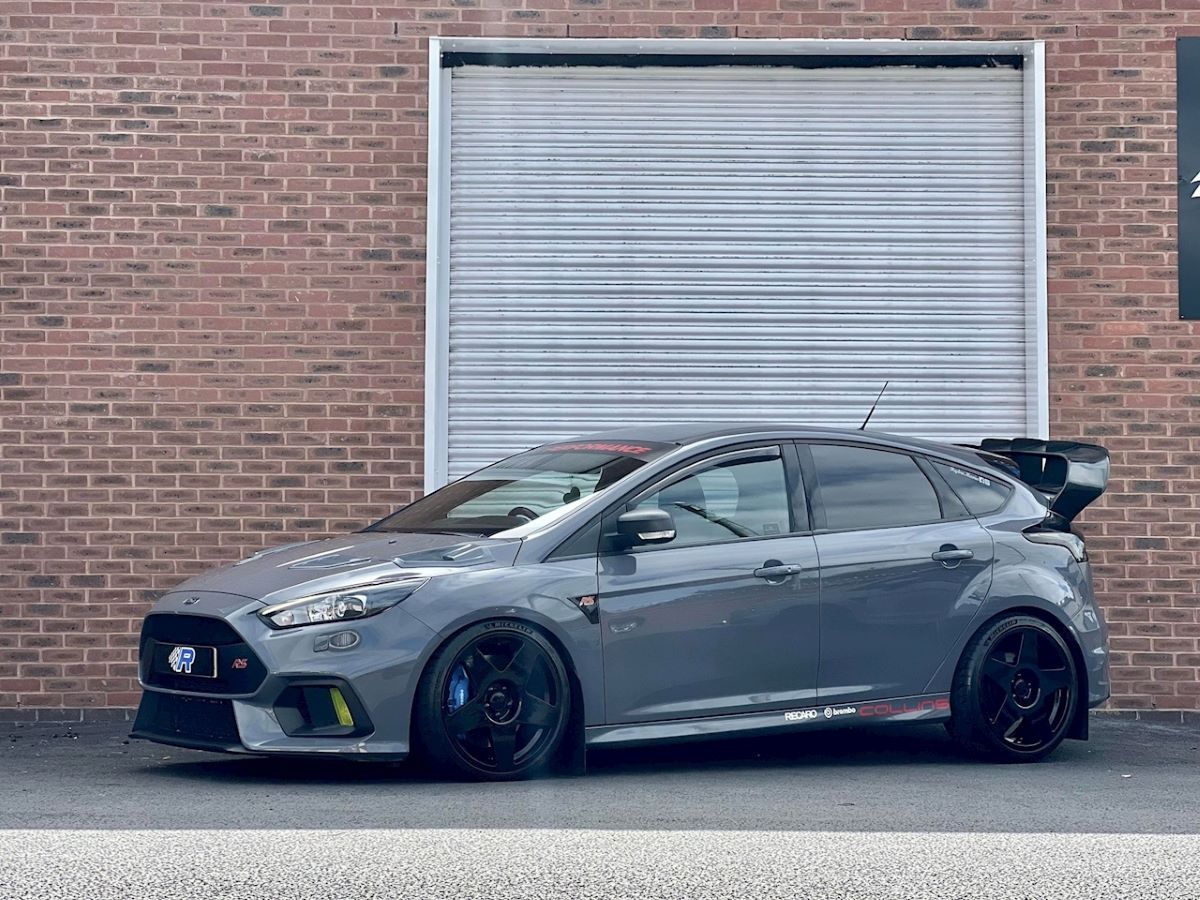
While the four-wheel-drive system itself is notable, it’s Ford’s unique application of it that truly impresses. Rather than opting for a grip-obsessed, planted configuration, Ford has gone in the opposite direction.
By combining sophisticated mechanicals with smart electronics, the Focus RS is engineered to be easily driftable — a characteristic that makes it an absolute blast to drive. It delivers a level of driving fun that rivals like the Audi RS3, Mercedes A45 AMG, and Golf R have never quite achieved.
A bold aerodynamic package ensures there’s no confusing your RS with the modest 1.5-litre diesel model your elderly neighbor might drive.
This includes a pronounced front bumper, functional rear diffuser, and a spoiler mounted on the boot lid — all of which not only enhance visual appeal but also aid in stability. Meanwhile, the large front grille ensures the engine stays cool even under hard use.
Perhaps one of the RS’s most compelling selling points is its price tag, which significantly undercuts all of its direct competitors — and in some cases, by a wide margin.
2. Chevrolet Corvette C5 Z06
The Chevrolet Corvette is seen as a cool car no matter what year it was produced, but collectors pay special attention to the C5 Z06 model from 2001 to 2004.
This particular model boasts features that distinguish it from other Corvettes, including its styling and engine.
If you are looking to purchase a Corvette, it remains relatively affordable on the used-car market, although some observers predict that the price will rise in the near future.
Since the late 1950s, the Chevrolet Corvette has been virtually inseparable from the world of racing — a reputation that continues today with the fire-breathing C6, C7, and the latest C8 tearing up the tarmac.
While these newer generations bring modern design and serious power to the table, the C5 generation still deserves recognition — especially in its Z06 trim, introduced in the early 2000s. Produced from 1997 to 2004, and with the Z06 arriving in 2001, the Chevrolet Corvette C5 has already earned its place as a collectible.
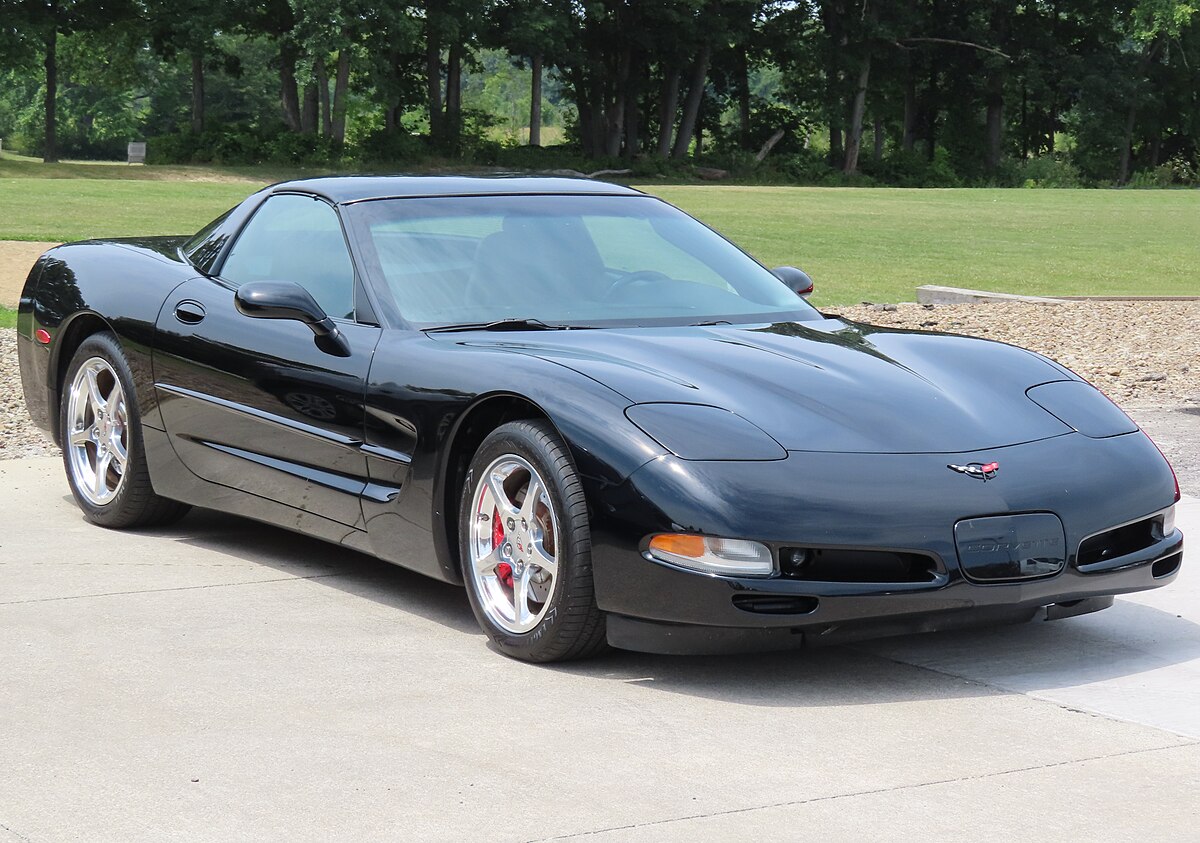
In many respects, the C5 was the C8 of its era, pushing the boundaries with its innovative chassis, hydro-formed frame rails, rear-mounted transaxle, and lightweight balsa-wood laminated floor panels.
These engineering feats might now be overshadowed by the groundbreaking mid-engine layout of the C8 — a first in the Corvette’s storied history — but they were no less revolutionary at the time.
The C5 was offered in three distinct body styles: a fixed-roof coupe, a standard targa top, and a convertible. The only area where it shows its age is the interior, which feels dated by today’s standards.
However, this shortcoming is offset by the C5’s performance-to-price ratio. Even in its heyday, it was considered a bargain — and today, clean, low-mileage examples in excellent condition can be found in the $30,000 range.
Although the C5 remained in production until 2004, the 2002 model year marked a key turning point for performance enthusiasts. That’s when the top-spec Z06 received a power boost, offering a straightforward enhancement to an already impressive car.
While the 2001 Z06 came with a robust 385 horsepower, the 2002 model was upgraded to 405 horsepower — prompting the memorable tagline:
That 20-horsepower increase allows the C5 Z06 to launch from 0 to 60 mph in just four seconds flat, and it can hit 100 mph in only 9.5 seconds.
This performance is not just impressive — it’s consistent. The suspension and brakes give the Z06 legitimate sports car credentials, further elevated by lightweight titanium exhaust pipes.
Handling is razor-sharp, the steering delivers excellent feedback, and the braking system is powerful and enduring — with the car coming to a stop from 60 mph in just 104 feet.
Equipped with an Active Handling stability control system, the C5 Z06 offers electronic assistance for high-performance driving scenarios. But for drivers who prefer a raw, unfiltered experience, turning off the system reveals the car’s ability to pull up to .99 Gs of lateral grip.
That said, if you’re chasing this level of performance, be ready to commit: the Z06 variant is only available with a six-speed manual transmission and comes exclusively in a hardtop configuration.
Also Read: Top 10 Worst and 10 Best Trucks for Towing
3. Lamborghini Murciélago
Purchasing a high-end sports car can be expensive when buying new. In certain cases, though, the value of these cars continues to increase over the following years.
Take, for instance, the Lamborghini Murciélago, known for its sporty design and scissor doors. Produced between 2001 and 2010, this car also features a V12 engine that truly sets it apart when you press down on the gas pedal.
At the Frankfurt Motor Show in September 2001, Automobili Lamborghini introduced the Murciélago — the first Lamborghini of the 21st century to carry the iconic V12 engine.
This legendary powerplant has been at the heart of the brand’s most revered models for nearly six decades.
According to legend, a bull named Murciélago (which means “bat” in Spanish) survived a fierce fight in the bullring and was subsequently gifted to Don Antonio Miura.
From this remarkable animal, Miura bred his famed line of fighting bulls, the very lineage that would later inspire Lamborghini’s own naming conventions and identity.

When it debuted, the Murciélago was powered by a 6.2-liter V12 engine that produced 580 CV at 7200 rpm. Lamborghini continued refining this powerhouse in subsequent models. The 2007 LP 640-4 version increased output to 640 CV at 8000 rpm.
Then came the LP 650-4 Roadster in 2010 with 650 CV, and finally, the extreme 670-4 SV model, produced between 2009 and 2010, which reached 670 CV and boasted a top speed of 341 km/h.
Several special edition versions of the Murciélago were produced in limited numbers. Among them was the 40th Anniversary edition released in 2003, limited to just 50 units and distinguished by its unique Verde Artemis (green) paintwork. Another standout was the Murciélago LP 640 Versace, unveiled in 2006, available in either black or white.
It featured a completely reimagined design courtesy of Lamborghini’s Ad Personam division in collaboration with designers from the renowned fashion house Versace. Also notable is the ultra-rare 670-4 SV China Limited Edition, created exclusively for the Chinese market with only 10 examples built.
In February 2002, the Lamborghini Murciélago, driven by Giorgio Sanna, set a new world speed record for a standard production vehicle at the Nardò test track in Puglia, Italy.
Over the span of one hour, the car covered 305.048 kilometers, reaching an average speed of 325.98 km/h on its fastest lap. During this record-setting session, it also achieved best times over distances of 100 kilometers and 100 miles.
4. Pontiac GTO
When American muscle cars come to mind, the Pontiac GTO is often one of the first you think of.
The 1966-67 model of the GTO holds special value. With its hood scoops, distinctive exterior design, and a strong V8 engine, it is especially prized by collectors and car enthusiasts.
Every so often, a car comes along that rekindles the obsession with classic American muscle — a love that’s endured long after the golden era ended.
It’s a real loss that Pontiac no longer exists, as the brand once produced some truly iconic machines. Among the coolest to ever wear the badge is the GTO Judge Convertible, and this May, Mecum will auction off an exceptionally rare example.
Brace yourself: this immaculate 1970 model could command as much as $350,000, according to Mecum’s own projections. That would make it one of the most expensive Judges sold in recent memory.
This particular GTO Judge Convertible is one of just 168 Ram Air III versions built for the 1970 model year. One quick look at the odometer tells you why it’s expected to fetch such a high price: it has only 656 miles (1,055 km) on it since new.
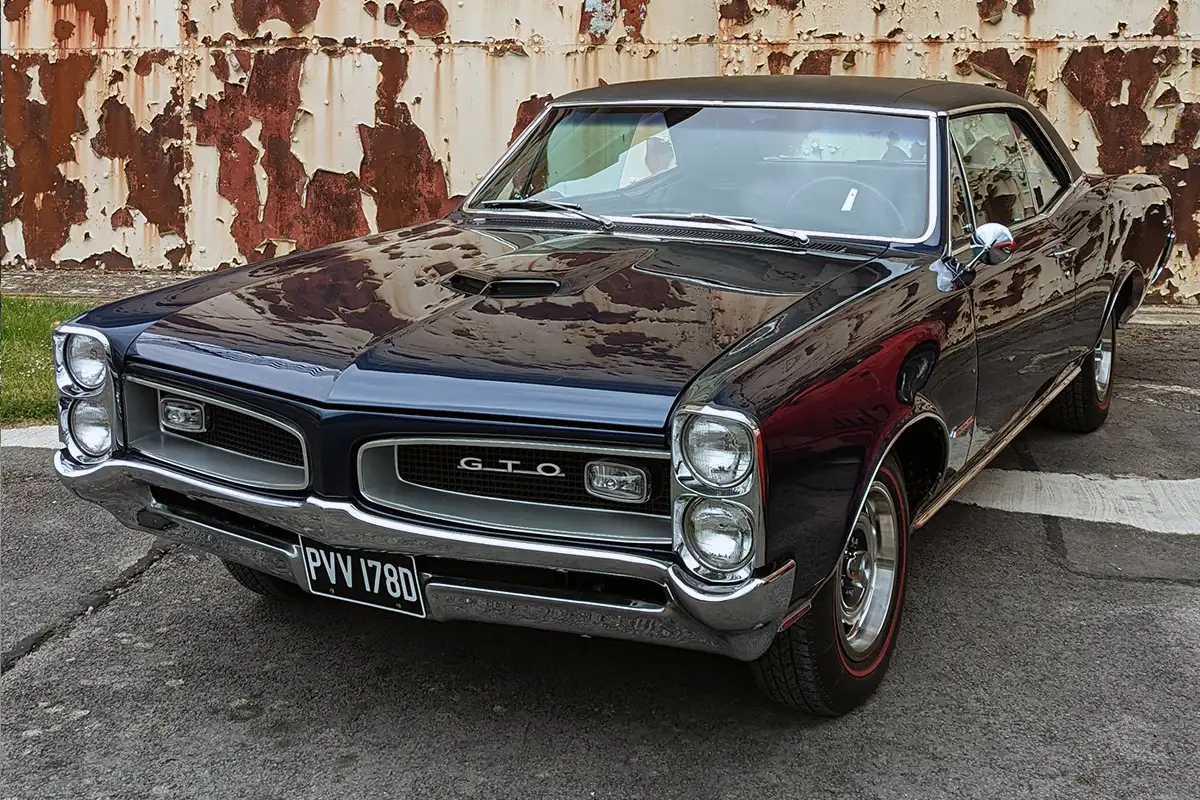
Given how little time it’s spent on the road, its superb condition is no surprise. The exterior is finished in flawless Pepper Green, paired with a light tan folding soft top.
Bright green and blue side decals add a splash of retro flair, and the car still rides on its original wheels wrapped in BFGoodrich Radial T/A tires.
The auction listing doesn’t offer much information about prior ownership or detailed service history, but a look inside the cabin reveals nearly everything you need to know.
For a vehicle now 55 years old, the interior is stunningly well-preserved, showing barely any signs of use — exactly what you’d expect from something with such minimal mileage. And while it’s common for unused cars to deteriorate if left neglected, this one clearly hasn’t suffered that fate.
As a 1970 model, this Judge retains its original 400 cubic-inch (6.6-liter) V8 engine, mated to a four-speed manual transmission — exactly how enthusiasts would want it.
Sure, its 366 horsepower may not seem earth-shattering by today’s numbers, but this Ram Air III V8 offers something modern engines often lack: raw, unfiltered personality. It growls, it rumbles, and it practically begs for an open stretch of coastal asphalt where it can unleash its full voice.
5. Audi R8
Audi has long been recognized for its stylish features, but the Audi R8 elevated them even further with its sporty design and impressive engineering.
The car even made an appearance in Marvel’s Avengers movie series, where wealthy superhero Tony Stark chose the R8 as his preferred vehicle.
Scarcity could soon be a factor, as Audi’s 2023 model of the R8 was the final one produced. Therefore, you might want to secure one before they become increasingly difficult to find.
Few supercars are genuinely suited to daily driving, but the 2023 Audi R8 appears to be engineered with exactly that in mind. It delivers blistering acceleration while maintaining a surprisingly comfortable ride.
Beneath its sharp exterior, the R8 shares its mechanical foundation and powertrain—a potent V-10 engine paired with a seven-speed automatic transmission—with the audacious Lamborghini Huracán.
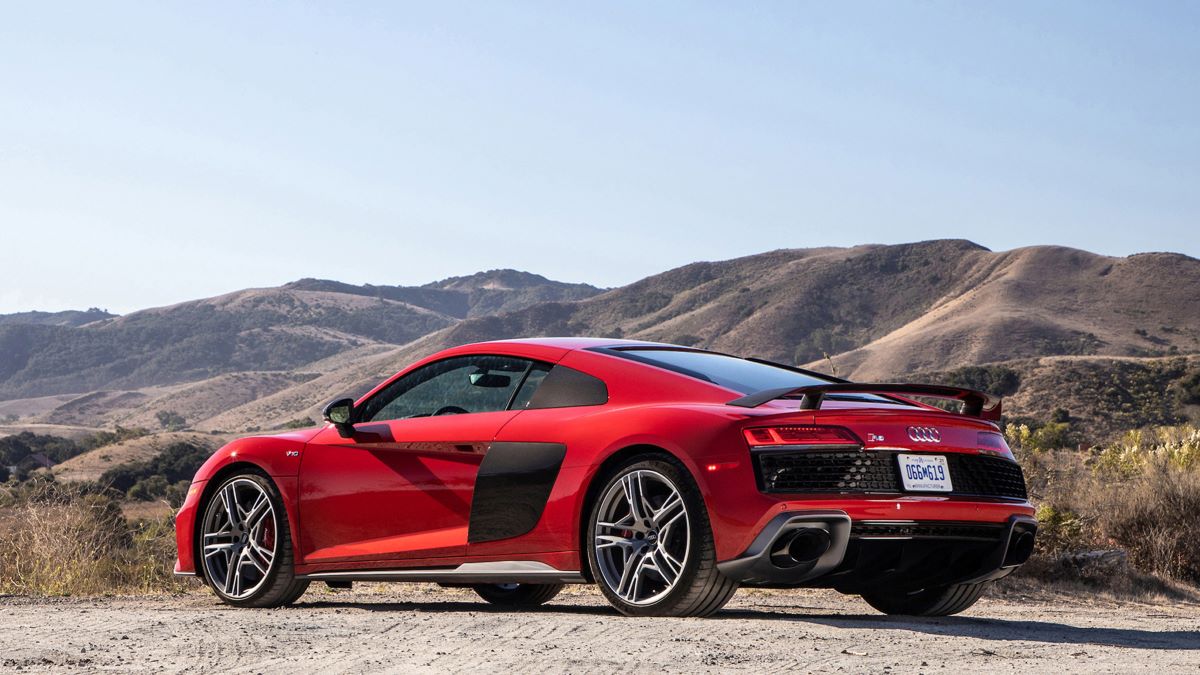
However, compared to its Italian cousin, the R8 is more restrained, offering a less aggressive experience on winding roads or racetracks. Instead, it leans into refinement, aligning more closely with the broader Audi lineup in terms of polish and usability.
Inside, the R8 features a snug, two-seat cabin adorned with premium materials and designed with a minimalist aesthetic. Rather than employing a traditional center-mounted infotainment screen, Audi integrates the system into a digital gauge cluster that serves dual functions.
The cabin is comfortable for both occupants, making the R8 a plausible grand tourer—if not for its limited cargo space, which holds just a single carry-on suitcase. If this balance of performance and luxury strikes the right chord, the time to buy is now—2023 marks the final year for Audi’s V-10-powered icon.
The 2023 model year closes the chapter on the current-generation R8. Audi is bidding farewell to its beloved supercar with a special limited-run GT edition. This version comes exclusively in rear-wheel drive and packs a 602-hp version of the V-10 engine.
It also receives a reworked seven-speed automatic transmission that, according to Audi, delivers quicker shifts. To elevate driver engagement, the GT introduces a Torque Rear driving mode aimed at enabling drift-friendly, tail-happy antics.
That said, the R8 doesn’t exactly scream to be thrown sideways in clouds of tire smoke—it’s a more composed and elegant machine.
Inside, the GT edition showcases an interior finished in black and red upholstery, complemented by carbon-fiber trim and a numbered plaque that marks its sequence in the limited production run.
Aside from the GT, the rest of the 2023 R8 lineup—which includes both coupe and convertible body styles—carries over without any significant changes.
Fastest-Depreciating Cars
We don’t want to dampen your excitement about purchasing a new car, but it’s crucial to keep in mind how much your gleaming new investment will be worth when you eventually decide to sell it.
The speed at which your car loses value referred to as depreciation can vary significantly depending on the model you choose.Although depreciation often doesn’t play a major role in the buying decisions of most people, it really should.
That’s because, along with other expenses like fuel consumption, servicing, and road tax, depreciation is a major financial factor.
It’s equally important to consider when purchasing a used car rather than a new one, because while heavy depreciation is bad news for a car’s original owner, it can actually benefit someone shopping for a used vehicle.
Also Read: Top 10 High-Performance Automatic Cars of 2025
In this article, we’ve utilized our latest resale data to highlight the models expected to lose the highest percentage of their value over a typical ownership period of three years or 36,000 miles.
1. Vauxhall Corsa Electric
The regular Vauxhall Corsa is one of the best-selling new cars in the UK, and this fully electric version offers many of the same advantages, such as a competitive price and a generous amount of standard equipment.
However, it is also the new car that loses the largest percentage of its value over three years and 36,000 miles of ownership.
The Corsa Electric can charge relatively quickly, minimizing the time spent at public charging stations, and it offers a decent range of up to 246 miles on a single charge, according to official figures.
This range is similar to the rival Peugeot e-208, but it’s worth noting that the competing MG4 provides a longer range, is similarly priced, and is more enjoyable to drive.
In addition, the MG4 is expected to retain more of its value than the Corsa Electric and its other rivals after three years of ownership and 36,000 miles.
The Vauxhall Corsa Electric has strengths such as being relatively well priced, offering respectable charging speeds, and providing plenty of standard kit.
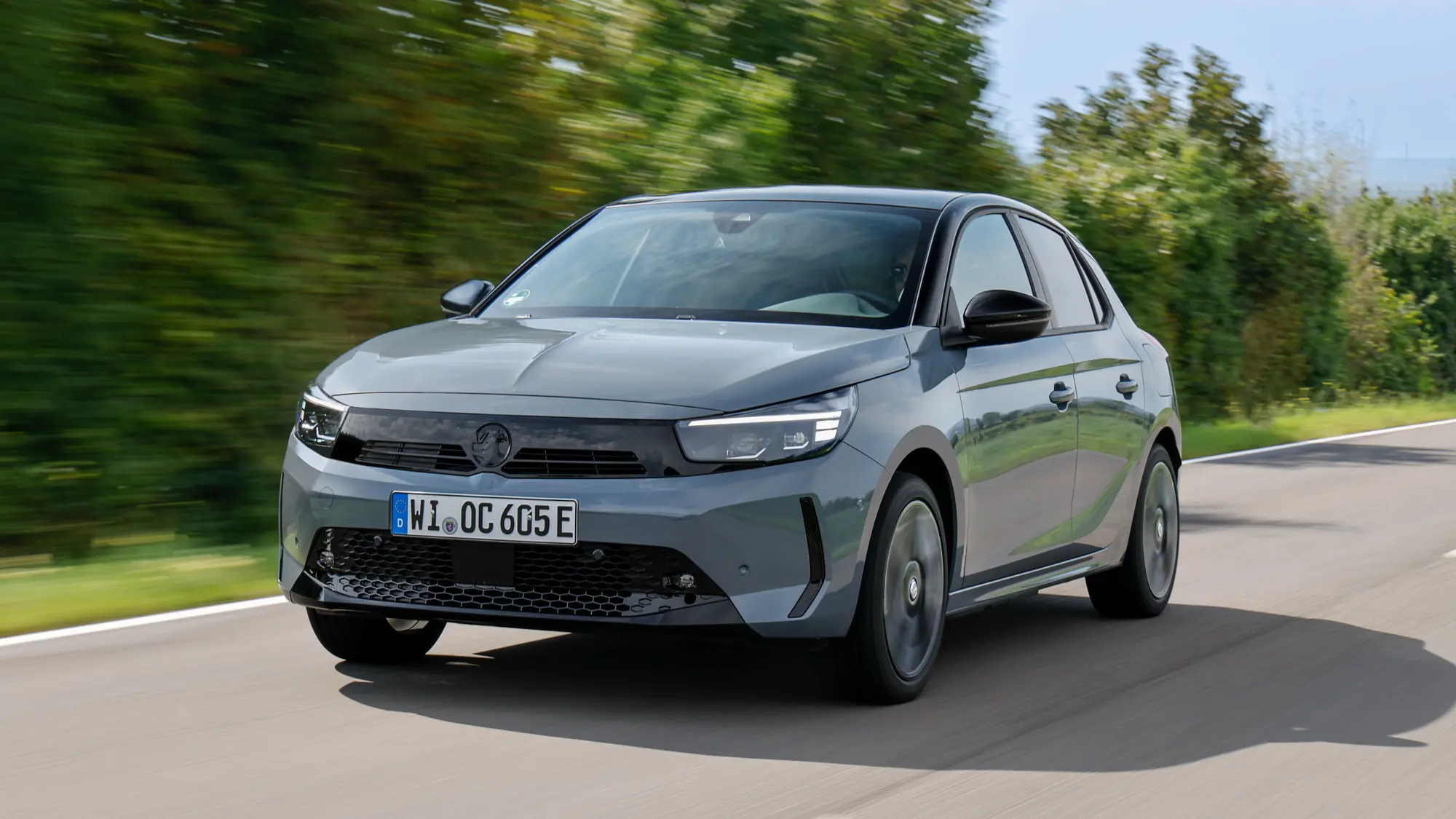
On the downside, it has a disappointing Euro NCAP safety rating, rivals that are nicer to drive, and could improve its reliability. The Model Design 50kWh has a list price of £29,045, a 36k/3-year resale value of £8300, a price drop of £20,745, and a retained value of 28.6%.
Meet the car formerly known as the Vauxhall Corsa-e—now simply called the Vauxhall Corsa Electric. If you hadn’t already figured it out, this is the fully electric version of one of the UK’s best-selling vehicles, and it delivers one of the most straightforward EV experiences currently on offer.
But before diving into the specs, we need to talk about its appearance. The Corsa has recently undergone a bold facelift, becoming the final passenger model in Vauxhall’s lineup to embrace the brand’s latest design language.
That includes the distinctive ‘Vizor’ front fascia, which gives the car a sharper, more cohesive look—one that’s arguably a big step forward.
Other exterior updates include the Corsa name now spelled out across the rear bootlid, newly designed LED headlights, and a fresh set of alloy wheels. I
nside, however, the changes are less dramatic. While there’s been a cabin refresh, it’s disappointingly minimal. That said, under the skin, the Corsa Electric gets a powertrain upgrade in line with what’s seen in the Peugeot e-208.
The previous setup—featuring a 134bhp electric motor and 50kWh battery—still remains in the lineup.
But it’s now joined by a new 154bhp motor and a 51kWh battery, which Vauxhall has optimistically dubbed the ‘Long Range’ option. The former delivers a 222-mile range, while the latter stretches that to a claimed 246 miles.
Here’s where the Corsa Electric distances itself from some of its more flamboyantly styled competitors. It outpaces the Fiat 500, Mini Electric, and Honda e in terms of range, while packing in practical, ownership-focused features that suggest it’s meant to be lived with—not just admired on Instagram.
Features like an 11kW onboard charger come as standard, allowing a full charge from empty in five hours and 15 minutes with the right setup, or around seven and a half hours using a standard 7kW home wallbox. For those relying on public charging, a typical 0–80% top-up on a 100kW rapid charger takes just 30 minutes.
This might be one of the easiest EVs for newcomers to hop into, largely because it behaves almost identically to its petrol-powered counterpart. Press the start button, shift into D (or B for added regenerative braking), and you’re off. No quirks or learning curves here.
It’s a thoroughly conventional drive, with balanced steering, smooth throttle and brake response, and road manners that are generally well-sorted—even if the suspension occasionally gets a little jittery. Head over to the Driving tab for the full technical breakdown.
Arguably, the most disappointing element is the interior. Despite the fresh exterior, the cabin doesn’t reflect the same level of attention or imagination. Sure, there’s a new steering wheel design and a slightly larger infotainment screen, but overall, it feels underwhelming.
That’s especially apparent when you compare it to the Peugeot e-208. There’s none of the visual flair or premium polish found in the French sibling. While the Corsa’s interior is logically laid out and solidly built, it ultimately lacks the creativity that could have made it feel special.
2. DS 9
The DS 9 was designed to be an unconventional option in the luxury car market, with this plug-in hybrid (PHEV) version offering the potential for low running costs while providing the comfort, technology, and quality you’d expect from a large cruiser.
Unfortunately, the reality doesn’t quite live up to the hype, as despite offering a comfortable ride and a well-finished interior, the DS 9 lags behind other models in areas like infotainment, rear headroom, and practicality.
Additionally, while it costs as much as many German rivals to buy, the DS 9 will lose more of its value over time, which could make it an appealing choice for used car buyers seeking affordable luxury.
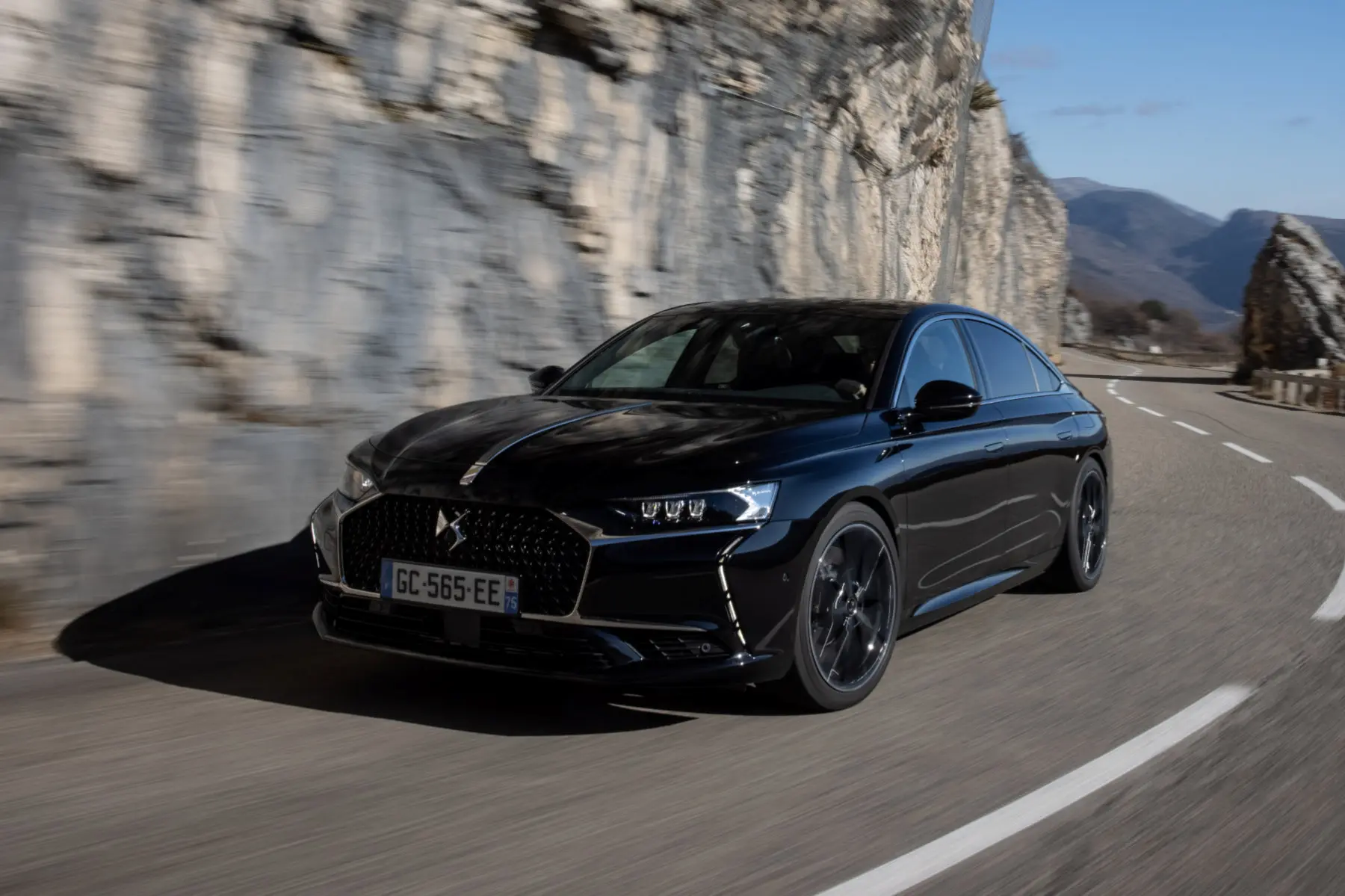
The Model 1.6 E-Tense 4×4 Opera is priced at £61,800, with a 36k/3-year resale value of £18,200, reflecting a price drop of £43,600 and a retained value of 29.4%.
Among its strengths, the DS 9 offers a largely comfortable ride, low road and wind noise, and a well-finished interior. However, it has several weaknesses, including sluggish and unintuitive infotainment, average rear headroom, and fast depreciation.
3. Mazda MX-30
Mazda’s first electric car, the MX-30, is already a relatively expensive choice, and it unfortunately loses value faster than most of its rivals, with more than £20,000 disappearing after three years and 36,000 miles of ownership.
The Mazda MX-30, specifically the Model Makoto, has a list price of £32,395 and a 36k/3-year resale value of £9,900, reflecting a price drop of £22,495 and a retained value of 30.6%.
While the MX-30 offers a good balance between ride and handling, a smart interior, and a great infotainment system, it doesn’t compensate for its drawbacks.
The car has a disappointing range of just 124 miles, which likely drops to around 115 miles in real-world conditions, and it feels sluggish on faster roads.
Additionally, while the interior is well-finished, accessing the back seats through the rear-hinged doors requires some getting used to. The boot space is also quite limited, and the rival Kia Niro EV offers substantially more cargo capacity.
The strengths of the MX-30 include its good ride and handling balance, a smart interior with an easy-to-use infotainment system, and being well-equipped, but its weaknesses include a poor range, fast depreciation, and cramped rear-seat space.
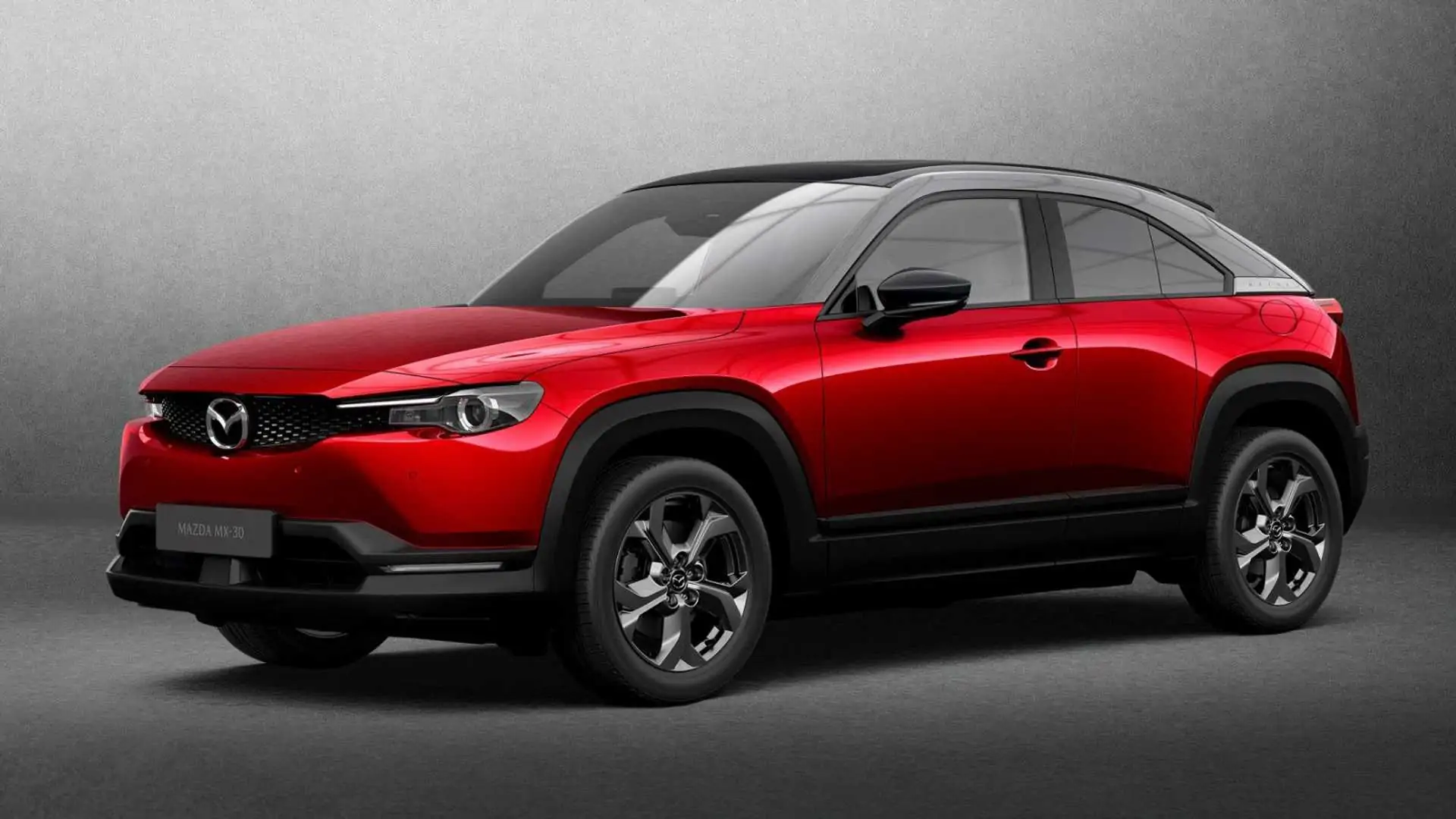
An electric vehicle with as limited a range as the 2023 Mazda MX-30 is a rarity these days—something not commonly seen since the early days of the first-generation Nissan Leaf.
That shortcoming significantly diminishes the overall appeal of this otherwise sleek and compact crossover.
The majority of competitors now offer over 200 miles of range per charge and, in many cases, outperform the MX-30 in terms of acceleration as well.
What the Mazda does have going for it are several standout features: a sustainable, environmentally conscious interior, a head-turning design with coupe-like lines, and a notably lower entry price.
In fact, its MSRP comes in around $5000 less than EV alternatives like the Kia Niro EV and Volkswagen ID.4. Despite these advantages, availability is a major issue—it’s only sold in California and in very limited quantities.
While the MX-30 may suit drivers who stick close to home and want a stylish, eco-minded ride, it’s easy to understand why the vehicle struggled to gain traction in an increasingly competitive EV landscape.
What’s New for 2023?
There are no updates to the MX-30 EV for 2023, but Mazda has confirmed that this will be its final model year. Internationally, the nameplate will carry on in the form of the MX-30 R-EV, a version equipped with a rotary-engine-based range extender designed to recharge the battery.
4. Jeep Compass
Jeep is known for its off-roading capabilities, and the latest Compass SUV certainly lives up to that reputation, offering impressive performance away from the tarmac.
However, on the road, the Compass falls short compared to its rivals, as it is louder, has steering that feels too light to inspire confidence, and lacks the performance expected from a car of its size.
The Model 1.3 T4 GSE PHEV Summit comes with a list price of £44,655, and its 36k/3-year resale value is £13,875, reflecting a price drop of £30,780 and a retained value of 31.1%.
Inside, the Compass offers a simple, user-friendly infotainment system and a high-up driving position that SUV buyers tend to favor, but the interior quality is disappointing in places, and some of the controls are confusingly arranged.
While there is decent space on the rear bench for passengers, most family SUVs provide more cargo room. This plug-in hybrid version sacrifices some boot space due to its battery, but it compensates with an official all-electric range of 32 miles.
The strengths of the Jeep Compass include its off-road ability, reasonably spacious interior, and respectable equipment levels, while the weaknesses include a lack of engine refinement, a small boot for its class, and disappointing interior quality.
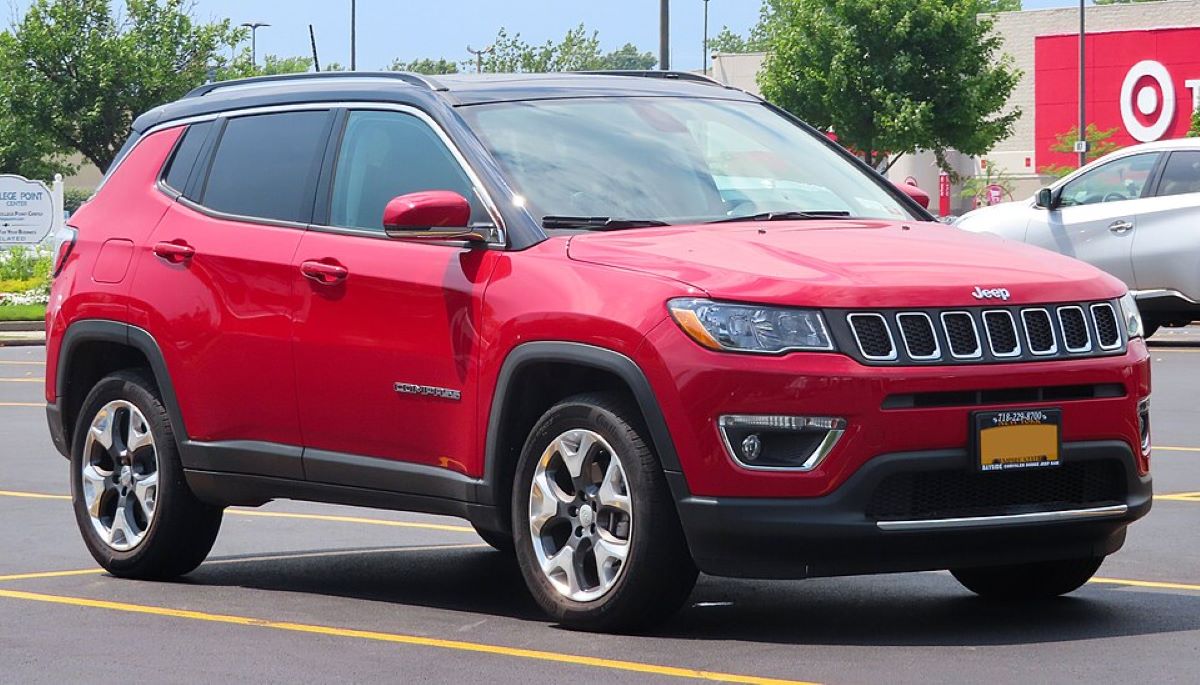
With the Cherokee temporarily out of the picture, Jeep is now left with a single compact SUV in its lineup. Fortunately, the Compass has always stood out as the more appealing choice between the two, thanks to its more refined design, better interior space, and manageable dimensions.
Powering the Compass is a fairly efficient 200-hp four-cylinder engine paired with a smooth-shifting eight-speed automatic transmission. While it doesn’t deliver the same driving excitement as some of its rivals, it offers a compliant ride and well-mannered road behavior.
Those looking for off-road capability might consider the Trailhawk model, which comes with the hardware to handle rugged terrain.
That said, most buyers are unlikely to use it for serious off-roading, and we think the Compass would benefit more from improved steering precision and sportier handling to suit everyday driving.
All-wheel drive is standard across the board, and a relatively low starting price may catch the eye—but for shoppers planning to spend most of their time on asphalt, options like the Honda CR-V and Mazda CX-5 are more complete packages.
For the 2025 model year, the Compass lineup has been trimmed down to just four trims, with the Latitude Lux dropped. The only notable addition is a new limited-edition paint color called Joose.
It’s expected to roll out later in the year, though Jeep hasn’t clarified exactly what kind of juice inspired the name—orange seems like a good guess, but pomegranate could be in the running.
The base Compass arrives decently equipped, offering all-wheel drive and an 8.4-inch infotainment display that supports Apple CarPlay and Android Auto.
Still, we suggest upgrading to the Latitude trim, which brings in standard heated front seats, a heated steering wheel, automatic high beams, proximity keyless entry, and remote start.
It also unlocks access to several worthwhile option packages. One gripe: white is the only no-cost exterior paint. If you want another color, you’ll need to budget an extra $595.
All Compass models feature a 200-hp 2.0-liter turbocharged inline-four engine, mated to an eight-speed automatic transmission that drives all four wheels.
The Trailhawk trim stands out with a more advanced all-wheel-drive setup, including a “crawler” gear ratio and an exclusive Rock mode integrated into the Selec-Terrain system. On the road, the Compass handles with decent agility, though its steering is uncommunicative and lacks precision.
There’s noticeable body roll when cornering hard, yet the overall dynamics feel composed and under control. Still, competitors like the Mazda CX-5 and CX-50 offer a level of driver engagement the Compass doesn’t quite reach.
During our limited time driving the Compass off-road, it confidently tackled moderate obstacles, and the all-wheel-drive system performed without any hiccups.
5. Audi A8
The Audi A8 is a luxury limousine that many might argue, given its price, is not primarily concerned with running costs or depreciation.
However, even the super-rich wouldn’t want to make a poor investment, and with enough value lost after three years to purchase a Range Rover Evoque, this version of the A8 doesn’t fare well in that regard. Despite this, there’s much to appreciate about the car to shift your focus away from the financials.
The S8 Quattro Vorsprung 4dr Tiptronic with its 55 TFSI quattro Sport Tiptronic variant, has a list price of £82,485 and a 36k/3-year resale value of £25,900, reflecting a price drop of £56,585 and a retained value of 31.4%.
The power delivery from the petrol engine is incredibly smooth, and it revs more eagerly than the equivalent diesel engine, though it doesn’t quite match the performance of the Mercedes S-Class S500.
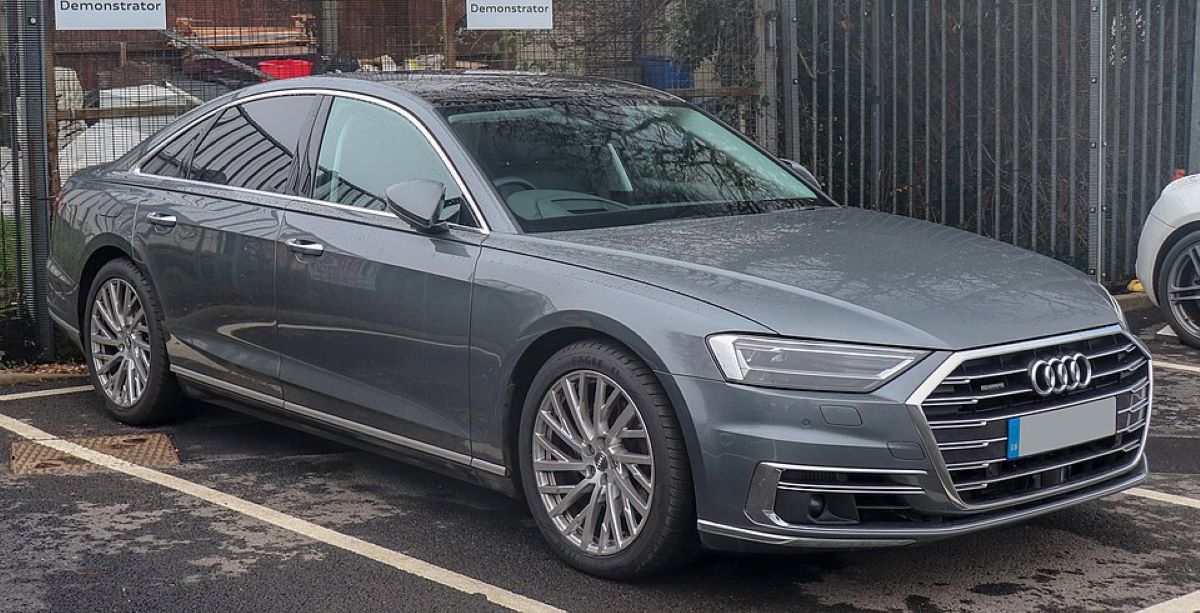
Like the S-Class, the A8 features air suspension, which, while providing a comfortable ride, does cause some wallowing through corners.
Despite this, the comfort level is exceptional, and the A8 is one of the most comfortable cars in its class. Inside, the A8 feels genuinely special, with a wealth of gadgets designed to enhance the driving experience and an abundance of space, particularly in the long-wheelbase model.
Strengths of the Audi A8 include its extremely comfortable ride, spacious interior, and class-leading interior quality, while its weaknesses include being expensive to run in terms of depreciation, the plug-in hybrid having a shorter electric range compared to the S-Class, and a dim-witted automatic gearbox.

